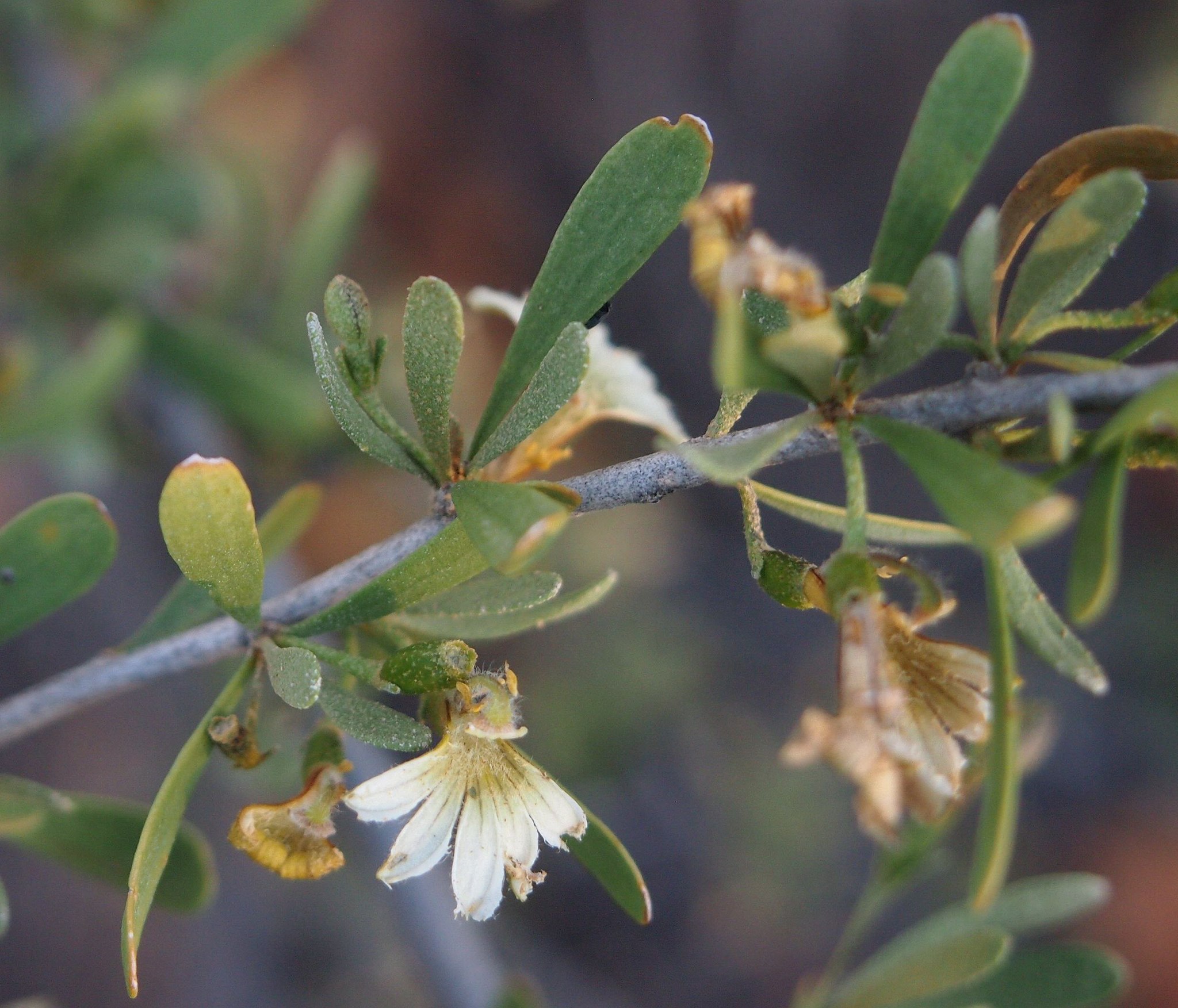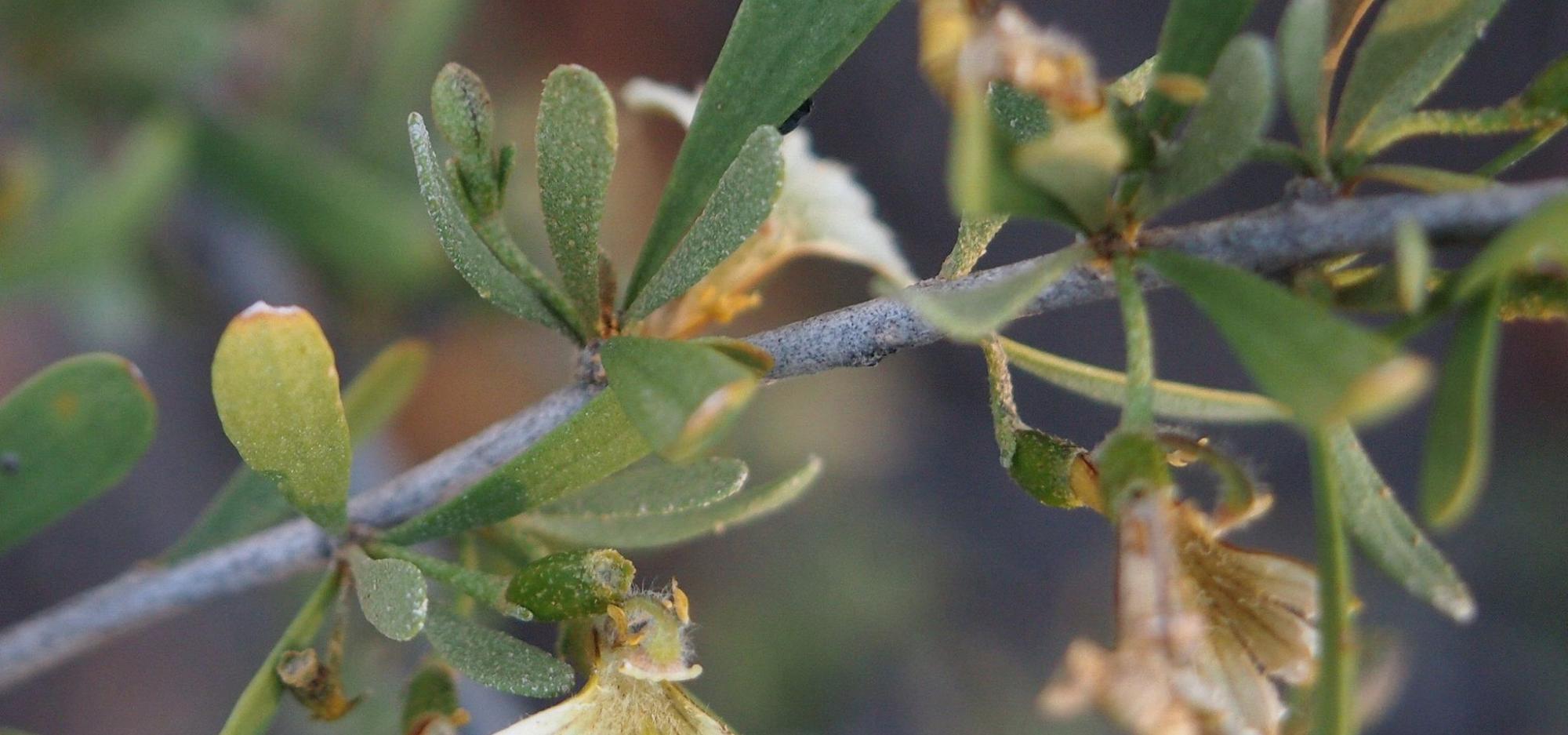
Noongar Name: Murin Murin
Wongutha Name: Munyun
Ngalia Name: Mulkakutjal
Botanical Name: Scaevola spinescens
Common Name: Maroon Bush or Currant Bush
Appearance
Maroon Bush is a hardy evergreen similar in appearance to rosemary and preferring similar conditions. Choose a full-sun or partly shaded spot with fertile soil that drains easily.
Established plants will tolerate drought, sandy soils and some salinity. Usually growing no bigger than 2m, this bird-attracting bushfood is great for empty spaces, scrub-themed landscapes, hedgerows and even an edible bonsai.
Distribution
Ashburton, Augustus, Cape Range, Carlisle, Carnegie, Central, Chichester, Eastern Goldfield, Eastern Mallee, Eastern Murchison, Edel, Fitzgerald, Fortescue, Geraldton Hills, Hamersley, Hampton, Katanning, Lateritic Plain, Lesueur Sandplain, Mackay, Mann-Musgrave Block, Maralinga, Mardabilla, McLarty, Merredin, Northern Jarrah Forest, Nullarbor Plain, Pindanland, Recherche, Roebourne, Rudall, Shield, Southern Cross, Tallering, Trainor, Western Mallee, Western Murchison, Wooramel.
Uses
It features in Aboriginal bush medicine as a treatment for cancer, heart disease, intestinal conditions, kidney and urinary conditions, and general illness.
Sources
https://florabase.dpaw.wa.gov.au/browse/profile/7644
https://tuckerbush.com.au/maroon-bush-scaevola-spinescens/
Vivienne Hansen and John Horsefall 2019, Noongar Bush Tucker – Bush food plants and fungi of the south-west of Western Australia UWAP - UWA Publishing

